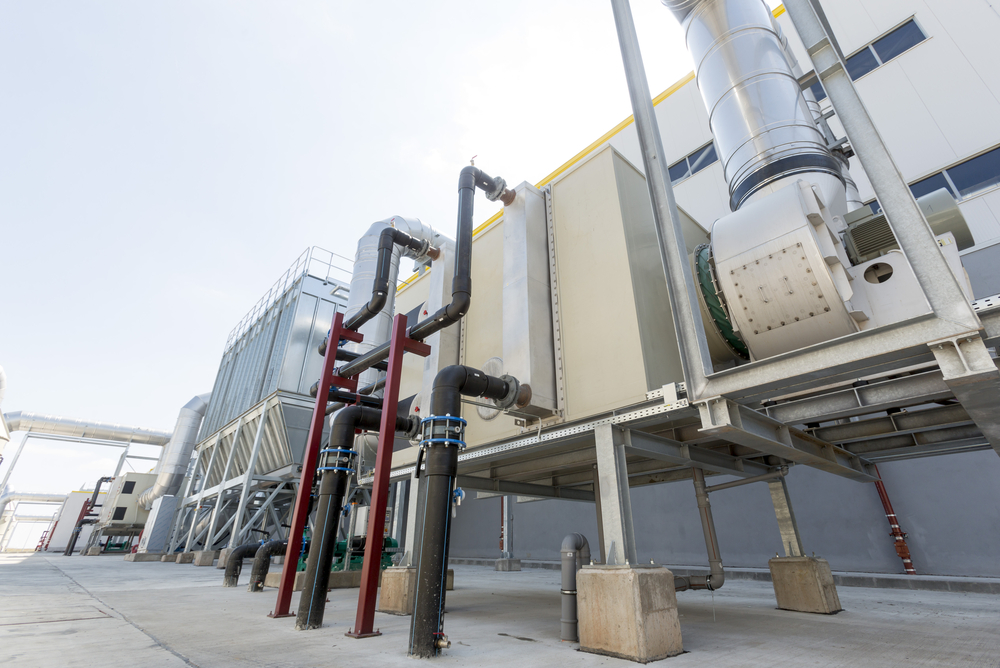A recent decision by an EPA administrative law judge (ALJ) rejected an EPA argument of its interpretation of the Manufacturing Process Unit (MPU) exemption.

The Resource Conservation and Recovery Act (RCRA) governs the EPA’s authority to regulate the proper management of hazardous and nonhazardous solid waste. The Act determines the boundary where the manufacturing process ends and the waste management process begins. One long-standing exemption under RCRA is the MPU exemption. The exemption under 40 Code of Federal Regulations (CFR) 261 states:
“A hazardous waste which is generated in a product or raw material storage tank, a product or raw material transport vehicle or vessel, a product or raw material pipeline, or in a manufacturing process unit or an associated non-waste-treatment-manufacturing unit, is not subject to regulation under parts 262 through 265, 268, 270, 271 and 124 of this chapter or to the notification requirements of section 3010 of RCRA until it exits the unit in which it was generated, unless the unit is a surface impoundment, or unless the hazardous waste remains in the unit more than 90 days after the unit ceases to be operated for manufacturing, or for storage or transportation of product or raw materials.”
The order finalizing the ALJ’s decision in the case In the Matter of: ISP Freetown Fine Chemicals, Inc., EPA Docket No. RCRA-01-2018-0062 was issued on September 22, 2022, by the EPA’s Environmental Appeals Board (EAB).
Background
The case began in 2018 when the EPA alleged certain “receiver” tanks used by ISP Freetown Fine Chemical, Inc., in a distilling process for certain chemicals utilized in making health and beauty products were ignitable hazardous water storage tanks that were not being used within compliance of RCRA regulations. ISP responded that the receiver tanks were used in the manufacturing process and not subject to RCRA regulations under the MPU exemption.
ISP and the EPA entered into extensive negotiations and could not reach an agreement. Then, they filed a joint motion to the EAB tribunal for alternative dispute resolution (ADR). That motion was granted on February 10, 2020.
On October 16, 2020, the parties filed a Partial Consent Agreement and Final Order (Partial CAFO), which fully resolved four of the counts and partially resolved four other counts. Those documents indicated that the “central remaining issue in dispute is whether the tanks and equipment cited in the unresolved claims are subject to” RCRA regulation, according to the final order.
Game-changing decision
Prior case precedents for the Tribunal in determining MPU exemptions were:
- General Motors Automobile-North America, EPA Docket No. RCRA-05-2004-0001
- Chem-Solv, Inc., EPA Docket No. RCRA-03-2011- 0068
Those cases established that the MPU exemption applies “where the ‘integral parts’ of a ‘production system’ are used to ‘create a product’—but the exemption does not apply downstream of production, where wastes have become a ‘waste disposal problem.’”
Both of these cases upheld the EPA's position that the specific units at issue were not exempt. The new decision is the first to reach the opposite result, and it did so in the context of distillation units similar to those used throughout the chemical and other industries, according to a Lexology article by Beveridge & Diamond PC analyzing the decision.
The EPA’s argument was “that the ALJ should view the receivers in isolation from the rest of the distillation units of which they are a part,” as “the receivers did not qualify as manufacturing process units, because no products were produced inside the receivers and because the wastes were generated upstream of the receivers, in the associated ‘condensers,’” adds Beveridge & Diamond.
The EPA argued that the “test” to determine whether a component is part of the manufacturing process is (1) whether “manufacturing occurs within the unit” or whether there is the “transformation of materials” or an “intentional physical or chemical reaction” and (2) “whether hazardous waste is formed.”
The ALJ agreed that the proper question is whether the component at issue “is part of the manufacturing process,” not whether “‘manufacturing’ occurs within the component.” It was concluded that “a component is part of the manufacturing process if it is operated to produce a product” and “while the ‘manufacturing process’ does not require a ‘transformation of materials’ directly within the component, the component must be operated to produce a product, and not as part of the post-production process.”
The ALJ ruled that the “Respondent’s batch distillation unit is comprised of a ‘trio’ of elements – a reactor, condenser, and receiver tank. As each of those individual components are utilized to ‘carry out a specific task’ within the manufacturing process, the individual components that comprise this manufacturing process unit are exempt from RCRA regulation under the MPU exemption.”
The ALJ granted ISP an “accelerated decision,” which is basically a summary judgment.
“The decision may also significantly affect EPA’s National Compliance Initiative on air emissions from hazardous waste facilities since many of the allegations in cases being brought under that Initiative are reportedly premised on the assumption that receivers and other tanks do not qualify as exempt MPUs,” Beveridge & Diamond said. “It is worth noting, however, that the ALJ cautioned that distillation receivers may not always qualify for the MPU exemption and stressed that ‘[a] fact-intensive analysis is required in all other cases in which a respondent cites the MPU exemption as a defense to a RCRA violation.”
The industry takeaway is that there may be more leeway now regarding MPU exemptions.
“The MPU exemption may provide significantly more RCRA regulatory relief for receivers and other units than EPA has been claiming in recent years,” said Aaron Goldberg, a principal with Beveridge & Diamond. “However, companies asserting that particular units are covered by the exemption may have to demonstrate in detail how the units are designed and operated as part of a production process.”